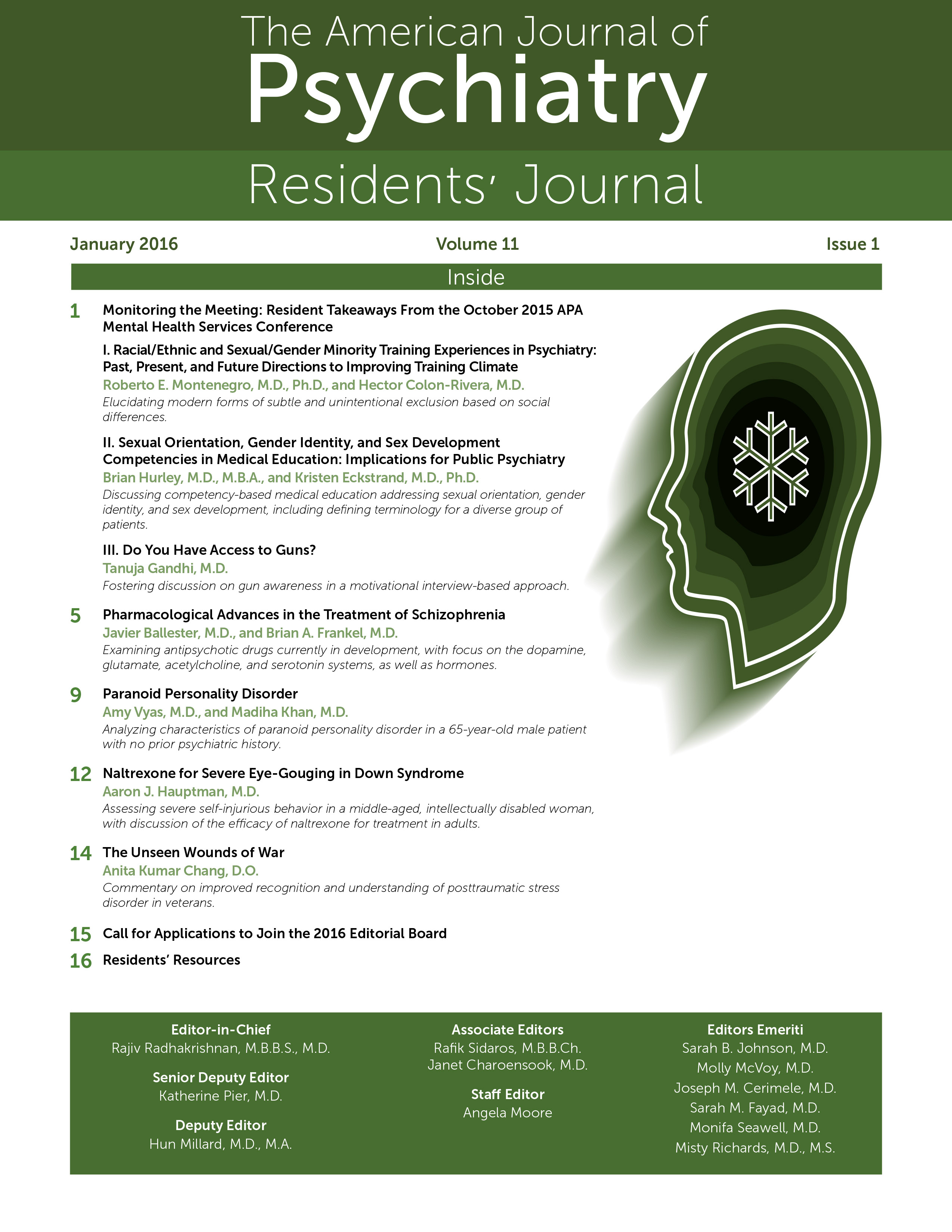Pharmacological Advances in the Treatment of Schizophrenia
| Drug | Mechanism | Status | Company | Clinical Trial ID |
|---|---|---|---|---|
| Dopamine system | ||||
| AMG579 OMS643762 | PDE 10A inhibitor | Phase 2 | Amgen | NCT01952132 |
| PDE 10A inhibitor | POC ongoing | |||
| Cariprazine | D3/D2 partial agonist | Phase 3 | Richter Pharma AG | |
| DAAOI-1 | DAAO catalizes D-serine and glicine | POC ongoing | NCT01390376 | |
| Eltoprazine | 5-HT 1A/1B agonist | POC ongoing | NCT01266174 | |
| L-DOPA | Dopamine stabilization | POC ongoing | NCT01636037 | |
| Stepholidine | D2 antagonist/D1 agonist/5HT 1A agonist | POC ongoing | University of Toronto | |
| YKP1358 | D2/D3/5HT2A antagonist | Phase 2 | SK Bio-Pharmaceuticals | |
| Glutamate system | ||||
| Bitopertin | Inhibitor of Gly-T-1 | Phase 3 | Roche | NCT00616798 |
| ADX71149 | Allosteric modulator of mGluR2 | Phase 2 | Addex | |
| Memantine | NMDA antagonist | POC completed | Rio Grande | NCT00757978 |
| Acetylcholine system | ||||
| EVP-6124 | a7nAchR agonist | Phase 3 | Pfizer | NCT01716975 |
| GTS-21 | a7nAchR agonist | Phase 3 | University of Florida/Veterans Administration | NCT00100165 |
| Xanomeline | M1/M4 agonist | POC Successful | Eli Lilly | |
| Hormonal systems | ||||
| Estradiol | Estrogen | Phase 2 | University of Santander | NCT00206570 |
| LY500307 | Selective Estrogen Receptor Modulator | Phase 1b/2a, Recruiting | University of Indiana/Eli Lilly | NCT01874756 |
| Oxytocin | Oxytocin | POC Ongoing/Recruiting | NIMH | NCT01712646 |
Dopamine System
Phosphodiesterase (PDE) 10A Inhibitors
D2/D3 Partial Agonist
5-HT1A/1B Agonist
l-Dopa
Stepholidine
YKP1358
Glutamate System
Bitopertin
D-Amino Acid Oxidase Inhibitors (DAAOI)
Positive Allosteric Modulator of Metabotropic Glutamate Receptors (mGluR2s)
NMDA Antagonist
Acetylcholine System
Alpha-7 nAchR Agonists
Muscarinic Agonists
Serotonin System
5HT3 Antagonists
Hormones
Estrogens/Selective Estrogen Receptor Modulators (SERMS)
Oxytocin
Key Points/Clinical Pearls
References
Information & Authors
Information
Published In
History
Authors
Metrics & Citations
Metrics
Citations
Export Citations
If you have the appropriate software installed, you can download article citation data to the citation manager of your choice. Simply select your manager software from the list below and click Download.
For more information or tips please see 'Downloading to a citation manager' in the Help menu.
View Options
View options
PDF/EPUB
View PDF/EPUBGet Access
Login options
Already a subscriber? Access your subscription through your login credentials or your institution for full access to this article.
Personal login Institutional Login Open Athens loginNot a subscriber?
PsychiatryOnline subscription options offer access to the DSM-5-TR® library, books, journals, CME, and patient resources. This all-in-one virtual library provides psychiatrists and mental health professionals with key resources for diagnosis, treatment, research, and professional development.
Need more help? PsychiatryOnline Customer Service may be reached by emailing [email protected] or by calling 800-368-5777 (in the U.S.) or 703-907-7322 (outside the U.S.).
